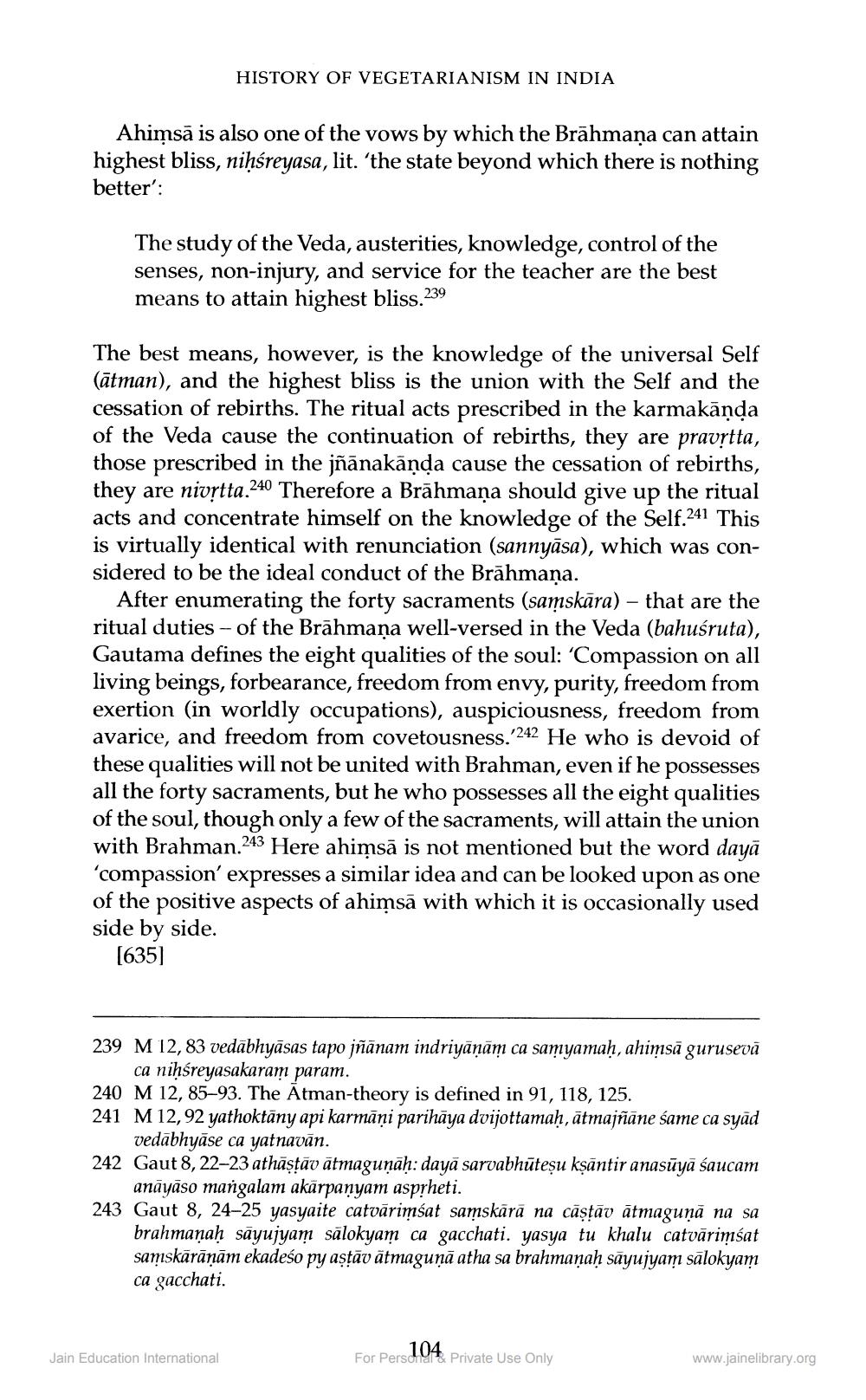________________
HISTORY OF VEGETARIANISM IN INDIA
Ahimsa is also one of the vows by which the Brāhmaṇa can attain highest bliss, niḥśreyasa, lit. 'the state beyond which there is nothing better':
The study of the Veda, austerities, knowledge, control of the senses, non-injury, and service for the teacher are the best means to attain highest bliss.239
The best means, however, is the knowledge of the universal Self (atman), and the highest bliss is the union with the Self and the cessation of rebirths. The ritual acts prescribed in the karmakāṇḍa of the Veda cause the continuation of rebirths, they are pravṛtta, those prescribed in the jñānakāṇḍa cause the cessation of rebirths, they are nivṛtta.240 Therefore a Brāhmaṇa should give up the ritual acts and concentrate himself on the knowledge of the Self.241 This is virtually identical with renunciation (sannyāsa), which was considered to be the ideal conduct of the Brahmaṇa.
After enumerating the forty sacraments (samskāra) – that are the ritual duties of the Brāhmaṇa well-versed in the Veda (bahuśruta), Gautama defines the eight qualities of the soul: 'Compassion on all living beings, forbearance, freedom from envy, purity, freedom from exertion (in worldly occupations), auspiciousness, freedom from avarice, and freedom from covetousness.'242 He who is devoid of these qualities will not be united with Brahman, even if he possesses all the forty sacraments, but he who possesses all the eight qualities of the soul, though only a few of the sacraments, will attain the union with Brahman.243 Here ahimsa is not mentioned but the word dayā 'compassion' expresses a similar idea and can be looked upon as one of the positive aspects of ahimsa with which it is occasionally used side by side.
[635]
239 M 12, 83 vedäbhyāsas tapo jñānam indriyāṇām ca samyamah, ahimsa gurusevā ca niḥśreyasakaram param.
240 M 12, 85-93. The Atman-theory is defined in 91, 118, 125.
241 M 12,92 yathoktany api karmāņi parihāya dvijottamaḥ, ātmajñāne same ca syad vedabhyase ca yatnavān.
242 Gaut 8, 22-23 athāṣṭāv atmaguṇaḥ: dayā sarvabhuteṣu kṣantir anasuyā saucam anāyāso mangalam akarpaṇyam asprheti.
243 Gaut 8, 24-25 yasyaite catvārimsat samskārā na cāṣṭāv ātmaguṇā na sa brahmaṇaḥ sayujyam salokyam ca gacchati. yasya tu khalu catvārimsat samskārāṇām ekadeśo py aṣṭāv atmaguna atha sa brahmaṇaḥ sayujyam salokyam ca gacchati.
Jain Education International
104
For Personal & Private Use Only
www.jainelibrary.org




